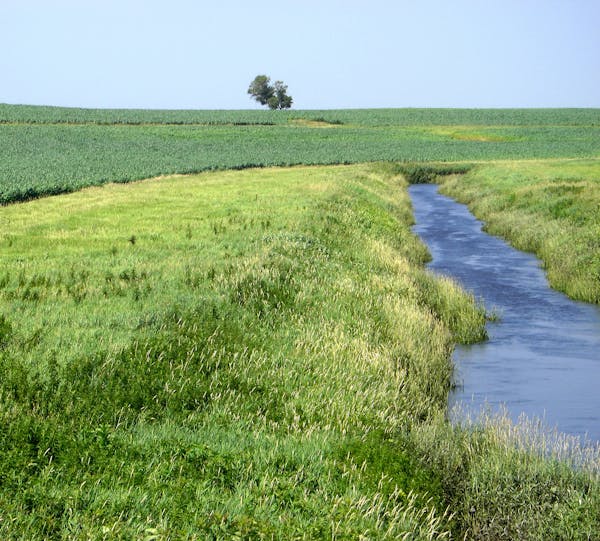HACKETT, Minn. – There's a saying on the American side of Lake of the Woods: If the ice fishing and snowmobiling seasons were one month longer, area resort owners could take summers off.
Kit Beckel, a Baudette area fishing guide for more than 50 years, never dreamed of such a paradigm shift.
In the early 1970s, he and his extended family dabbled with adding ice fishing adventures to their mainstay of summer walleye launches, a passion that still defines him. Their trials and errors in Wheeler Township helped turn a once-rugged trade aimed at hard-core outdoorsmen into an enduring vacation and convention business overflowing with groups, couples and families around the South Shore area, Rainy River and Northwest Angle.
"It was nothing like it is now," Beckel recalled last week during an interview in the expansive dining room at Sportsman's Lodge, a leading resort on the Rainy River that his family built and operated until 1994.
He said Peggy, his wife of 44 years, will sometimes remind him that the sale of the resort was a close forerunner to the boom.
Beckel, 66, shrugged and smiled. "That's when it really started to take off," he said.
Joe Henry, a spokesman for the Lake of the Woods Tourism Bureau, said winter has since eclipsed summer as the most lucrative season for hosting visitors in the "Walleye Capital of the World." According to surveying done by the state Department of Natural Resources, Minnesota anglers seasonally spend nearly 2 million hours on the ice of Lake of the Woods. Snowmobile and cross-country ski trails draw additional tourists.
Getting customers to the fish
Henry said Beckel has seen the transformation from its start and pioneered some of the changes with his trademark flair. For years now, Beckel's right biceps has been tattooed with the image of a twisting walleye above one of his nicknames, "LEGEND."
Also known widely as "Chopper" for the way he attacked waves as a teenager in one of his first charter boats, Beckel said the earliest ice fishing customers out of Sportsman's were flown — not driven — in a light utility Cessna airplane for a couple of seasons in the early 1970s.
The trips were undeniably sporty — landing on deep snow in arctic temperatures out of sight from shore. But weather delays and limited carrying capacity made the journeys unpredictable and inefficient.
The Beckels then tried plowing ice roads, investing in plows and a truck-mounted snowblower. But deep snow, drifting snow and long distances made for endless work. What they needed was a fleet of vehicles that could transport customers over the ice and snow to heated fish shanties 5 miles offshore.
Beckel said the first of those vehicles were crude, makeshift affairs usually involving a lead vehicle pulling a trailer of some kind. Hay bales commonly served as benches. One of those short-lived combinations was a 16-foot, open-air Lund boat mounted on skis and pulled by an Army jeep.
Although bitterly cold for riders, the concept worked on the season's early ice until snow piled up.
"We figured if it fell through the ice, the guys could float," Beckel said.
The ideal transport rig
He said his family finally found ice transportation success in 1979 or 1980 when Sportsman's bought its first track-driven Bombardier snow carriage. With an indoor cab, bulldozer-like tracks and a heated interior for up to eight passengers, the long drive could be made safely, quickly and comfortably.
The four Beckel brothers, led by their father, Dwain, quickly expanded the fleet by purchasing three more "Bombers" and six "track vans" manufactured by a family in Thief River Falls. As ice fishing demand grew, the resort added heated trailers to carry even more people with fewer runs.
By then, in the mid-to-late 1980s, even the resort owners who initially balked at an investment in ice fishing became believers, Beckel said. The Bombers, track vans and trailers could haul up to nearly two dozen anglers per trip onto Lake of the Woods and make multiple trips a day. The rigs shuttled to the fish houses in the morning and back to the lodge at dusk for dinner, drinks and sleep. Some anglers opted to stay overnight on the ice in so-called sleeper houses.
By comparison, the area's traditional summer fishing charters always have been limited by the Coast Guard to six anglers per boat on trips that traditionally last from 8 a.m. to 5 p.m. In a good year of summer-only business, Beckel said, you operated in the red for a couple of months until the first profits arrived late in the season.
"If not for the winter business," he said, "some of the resorts around here wouldn't make it."
Golden Knights have limited Stars' scoring chances to take 2-0 series lead

